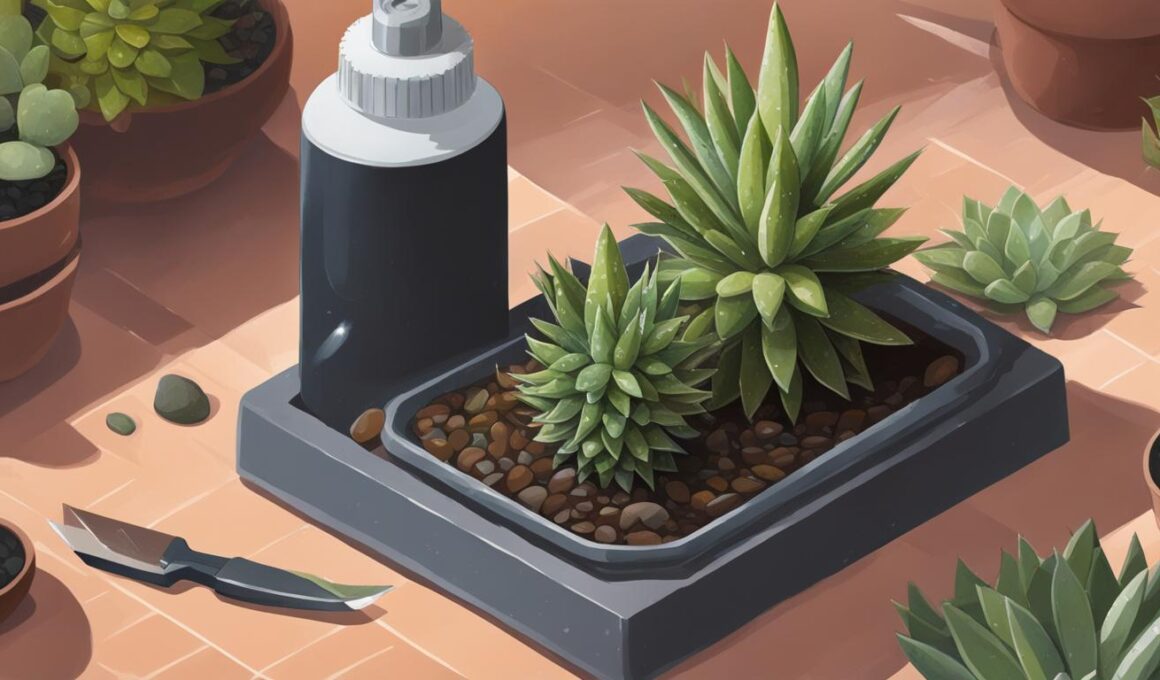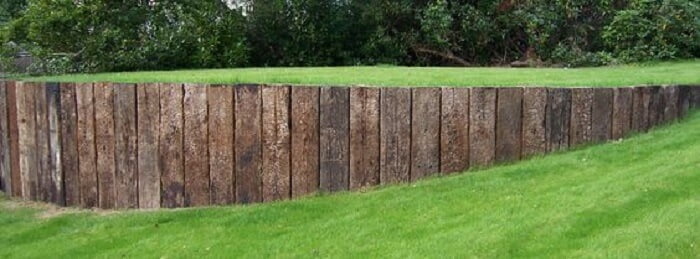Haworthia succulents are popular plants known for their various species and unique characteristics. If you’re a plant enthusiast looking to expand your collection, propagating Haworthia is a cost-effective way to do so. There are three primary methods for propagating these beautiful succulents: through seeds, offset division, or leaf cuttings. In this article, we will guide you through the process of propagating Haworthia and provide helpful tips to ensure success.
Post Summary
- Propagating Haworthia succulents can be done through three methods: seeds, offset division, or leaf cuttings.
- The ideal soil mixture for Haworthia propagation consists of 2/3 sand, crushed lava rock, or perlite and 1/3 potting soil.
- When propagating Haworthia from seeds, soak them in warm water, plant them in a suitable soil mixture, and provide ample light.
- Offset division involves separating offshoots or pups from the parent plant, allowing them to dry before replanting.
- Leaf cuttings can be taken from healthy leaves, dried until the cut edge forms a scab, and planted in a well-draining soil mixture.
Understanding Haworthia Succulents
Haworthia succulents are small plants with pointed leaves that grow in a rosette pattern. They have different species with variations in leaf texture, coloration, and patterns. These plants remain small and are perfect for container gardening.
Some of the common characteristics of Haworthia succulents include:
- Leaf Shape: The leaves of Haworthia succulents are typically triangular, elongated, or rounded.
- Leaf Texture: The leaves can have smooth, rough, or tuberculate surfaces.
- Leaf Coloration: Haworthia succulents come in various shades of green, from light to dark, and some species have translucent leaves.
- Leaf Patterns: Many Haworthia species have unique patterns on their leaves, such as stripes, dots, or raised ridges.
These characteristics make Haworthia succulents visually appealing and add interest to any indoor or outdoor garden.
| Haworthia Species | Leaf Shape | Leaf Texture | Leaf Coloration | Leaf Patterns |
|---|---|---|---|---|
| Haworthia cooperi | Triangular | Smooth | Translucent | Striped |
| Haworthia fasciata | Elongated | Rough | Dark green | Raised ridges |
| Haworthia retusa | Rounded | Tuberculate | Light green | Dotted |
Having a variety of Haworthia species in your collection can create a visually stunning display, showcasing the unique beauty of these small succulents. Their compact size also makes them ideal for small spaces and can be easily cared for both indoors and outdoors.
Choosing the Right Soil Mixture
When it comes to propagating Haworthia succulents, choosing the right soil mixture is essential for their growth and overall health. These plants thrive in well-draining soil that replicates their natural habitat. The ideal soil mixture for propagating Haworthia is a combination of 2/3 sand, crushed lava rock, or perlite, and 1/3 potting soil. This mixture provides excellent drainage and prevents waterlogging, which can lead to root rot.
Haworthia succulents, like many other cacti and succulents, prefer a soil mix that closely resembles their native desert environment. Adding sand, crushed lava rock, or perlite to the potting soil creates air pockets and improves drainage, preventing excess moisture from staying around the roots. The addition of potting soil helps retain a small amount of moisture necessary for the plants’ survival.
It is also important to consider the type of water you use to irrigate your Haworthia plants. Chlorinated water can be harmful to succulents, so it is best to avoid it. Instead, opt for distilled water or freshwater sources. This will help prevent mineral buildup and ensure the well-being of your propagated Haworthia succulents.
Comparison of Different Soil Mixtures for Haworthia Propagation
| Soil Mixture | Advantages | Disadvantages |
|---|---|---|
| 2/3 Sand and 1/3 Potting Soil | Provides excellent drainage, replicates natural desert environment | May dry out quickly, requires more frequent watering |
| 2/3 Crushed Lava Rock and 1/3 Potting Soil | Improves aeration and drainage, lightweight | May retain less moisture, requires careful monitoring of watering |
| 2/3 Perlite and 1/3 Potting Soil | Enhances drainage, prevents soil compaction | Lightweight, may require more frequent fertilization |
By choosing the right soil mixture and using appropriate watering techniques, you can provide an optimal environment for your propagated Haworthia succulents to thrive. Remember to monitor the moisture levels in the soil and water sparingly to prevent overwatering, which can be detrimental to these drought-tolerant plants. With the right soil mix and proper care, your propagated Haworthia succulents will flourish and bring beauty to your indoor or outdoor garden.
Propagating Haworthia from Seeds
If you’re looking to propagate Haworthia succulents, one method you can try is propagating from seeds. This can be an exciting and rewarding way to expand your plant collection. To get started, you’ll need to soak the Haworthia seeds in warm water for about 24 hours. This helps to soften the seed coat and promote germination.
Once the seeds have been soaked, you can fill small pots with a well-draining soil mixture, such as a combination of sand, crushed lava rock, or perlite, and potting soil. Lightly cover the seeds with sand or gravel and place the pots in a sealed container to create a humid environment.
It’s important to provide bright, indirect light to the seedlings. Avoid direct sunlight, as it can scorch the delicate plants. Keep the soil lightly moist, but be careful not to overwater. Once the seedlings have sprouted and developed a strong root system, you can consider transplanting them into individual pots.
Tips for caring for Haworthia seedlings:
- Water sparingly to avoid waterlogging the young plants.
- Provide bright, indirect light to promote healthy growth.
- Avoid over-fertilization, as this can damage the delicate root system.
- Handle the seedlings with care when transplanting to avoid damaging the young roots.
By following these steps and providing the proper care, you can successfully propagate Haworthia succulents from seeds and watch them grow into beautiful plants.
Propagating Haworthia through Offset Division
Another method for propagating Haworthia succulents is through offset division. This process involves separating the offshoots or pups that grow around the base of mature Haworthia plants. Offset division is an effective way to expand your Haworthia collection and create new plants.
To propagate through offset division, start by selecting a healthy parent plant with well-developed offsets. Carefully remove the offset from the parent plant using a sharp, sterilized knife or scissors. Be sure to include as many roots as possible to ensure the offset’s successful growth.
Once separated, allow the offset to dry out for a few days to prevent rotting. After the drying period, prepare a pot with the recommended soil mixture. Place the offset in the pot, covering the roots with the soil mixture and lightly pressing it down.
When caring for Haworthia offsets, it is important to water sparingly. Overwatering can lead to root rot and other issues. Instead, wait until the soil is completely dry before watering again. Provide bright, indirect light to promote healthy growth, but avoid direct sunlight as it can scorch the plants.
Comparison of Propagation Methods for Haworthia Succulents
Below is a table comparing the different propagation methods for Haworthia succulents:
| Propagation Method | Steps | Care Requirements |
|---|---|---|
| Seeds | Soak seeds, plant in soil mixture, provide bright indirect light | Keep soil moist but not waterlogged, transplant once roots have developed |
| Offset Division | Separate offset from parent plant, dry out, replant in soil mixture | Water sparingly, provide bright indirect light, avoid direct sunlight |
| Leaf Cuttings | Take leaf cutting, allow to dry, plant in soil mixture | Maintain soil moisture, provide bright indirect light, avoid overwatering |
Each propagation method has its own advantages and challenges. Experiment with different methods to find the one that works best for you and your Haworthia succulents. With proper care and attention, you can successfully propagate these unique and beautiful plants.
Propagating Haworthia from Leaf Cuttings
Propagating Haworthia succulents from leaf cuttings is a popular method that allows you to multiply your plant collection. Here’s a step-by-step guide on how to prepare and plant Haworthia leaf cuttings:
- Select healthy, young leaves from a mature Haworthia plant.
- Using a sharp knife or scissors, make a clean cut close to the base of the leaf.
- Place the cuttings in a cool, dry location and allow the ends to callus over. This process usually takes a few days to a week.
- Prepare a well-draining soil mixture by combining 2/3 sand, crushed lava rock, or perlite with 1/3 potting soil.
- Fill a small pot with the soil mixture and make a hole in the center using your finger or a pencil.
- Gently insert the callused end of the leaf cutting into the hole, making sure it is stable and upright.
- Water the soil lightly to moisten it, but be careful not to overwater.
- Place the pot in a location with bright, indirect light.
- Maintain the moisture level in the soil by misting it occasionally or using a humidity dome.
It’s important to note that not all leaf cuttings will successfully root and develop into new plants. Some may fail, while others may take several weeks or even months to show signs of growth. Patience and consistency in caring for your leaf cuttings are key to successful propagation.
“Propagating Haworthia from leaf cuttings is a fascinating process that allows you to create new plants from a single leaf,” says gardening expert Jane Smith. “It’s a rewarding way to expand your collection and explore the diversity of Haworthia species.”
Tips for Successful Haworthia Propagation from Leaf Cuttings
- Choose healthy leaves with no signs of damage or disease.
- Allow the cut ends of the leaves to dry and callus before planting them.
- Ensure the soil mixture is well-draining to prevent root rot.
- Provide bright, indirect light to encourage root development.
- Keep the soil lightly moist, but avoid overwatering.
Comparison of Haworthia Propagation Methods
| Propagation Method | Preparation | Planting | Care |
|---|---|---|---|
| Leaf Cuttings | Callus the cut ends of leaves | Plant in well-draining soil mixture | Provide bright, indirect light and keep soil lightly moist |
| Offset Division | Separate offshoots from the parent plant | Replant in pots with the same soil mixture | Water sparingly and provide bright, indirect light |
| Seeds | Soak seeds in warm water | Plant in small pots with soil mixture, cover lightly with sand or gravel | Keep in a sealed container with bright, indirect light |
Each propagation method has its own benefits and challenges. Experimenting with different methods can help you discover which one works best for you and your Haworthia succulents.
Conclusion
Propagating Haworthia succulents offers a rewarding and cost-effective way to expand your plant collection. Whether you choose to propagate through seeds, offset division, or leaf cuttings, these methods provide gardeners with the opportunity to successfully propagate Haworthia. By following the proper techniques and providing appropriate care, you can achieve a thriving garden of these beautiful succulents in your own home.
When propagating from seeds, remember to soak them in warm water before planting, provide bright indirect light, and avoid transplanting until the seedlings have developed a strong root system. For offset division, separate the pups from the parent plant, ensuring to include as many roots as possible, and let them dry before replanting. When propagating from leaf cuttings, allow the cut edge of the leaf to form a scab before planting and provide bright indirect light while waiting for the development of a root system.
Caring for propagated Haworthia succulents is crucial for their growth and health. Water the plants sparingly to avoid waterlogging, fertilize lightly during the summer months, and repot every two to three years while removing any dead leaves. Remember to avoid overwatering, excessive sunlight, and over-fertilization to prevent damage to the plants.
In conclusion, successful Haworthia propagation is achievable by following the proper methods, providing proper care, and avoiding common mistakes. With patience and attention to detail, you can create a thriving collection of Haworthia succulents that will bring beauty and enjoyment to your home.
Can the Propagation Techniques for Haworthia Succulents Also be Applied to Aeoniums?
Yes, the propagation techniques for Haworthia succulents can be applied to Aeoniums. To propagate Aeoniums, you can use the same method as for Haworthia succulents. Aeoniums can be propagated by stem cuttings, leaf cuttings, or offsets, so if you’re wondering what to do with aeoniums, these are the methods to try.
FAQ
Can I propagate Haworthia succulents from seeds?
Yes, Haworthia succulents can be propagated from seeds. Soak the seeds in warm water before planting them in pots with a soil mixture. Provide bright, indirect light and wait for the seedlings to develop before transplanting.
How do I propagate Haworthia through offset division?
To propagate Haworthia through offset division, carefully separate the offshoots or pups from the parent plant using a sharp knife. Make sure to include as many roots as possible. Let the offsets dry out before replanting in pots with a soil mixture.
Can I propagate Haworthia from leaf cuttings?
Yes, Haworthia can be propagated from leaf cuttings. Cut off a healthy leaf and allow it to dry until the cut edge forms a scab. Plant the leaf cuttings in pots with a soil mixture and provide bright, indirect light. Keep the soil moist and wait for the development of a root system before transplanting.
How should I care for propagated Haworthia succulents?
Water propagated Haworthia succulents sparingly to avoid waterlogging. Fertilize them lightly during the summer months. Repot the plants every two to three years and remove any dead leaves. Avoid overwatering, excessive sunlight, and over-fertilization.
What are some common mistakes to avoid in propagating Haworthia succulents?
Common mistakes in propagating Haworthia include excessive watering, too much sunlight, and over-fertilization. It is important to provide the right amount of water, avoid direct sunlight, and fertilize sparingly to prevent damage to the plants.
What are some tips for successful Haworthia propagation?
Some tips for successful Haworthia propagation include waiting for pups to grow their own root systems before removing them, allowing leaf cuttings to dry before planting, using a well-draining soil mixture, and providing bright but indirect light. Following these tips can increase the success rate of propagating Haworthia.










